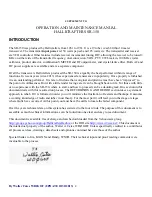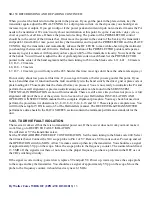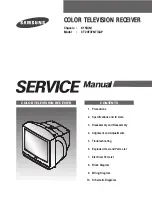
By Walter Cates WD0GOF (UPDATE 10/30/2013)
14
SR-150 REFURBISHING AND REPAIRING CONTINUED:
Unkey the transmitter and power down. If the signal is not correct and given that we have already demonstrated
nominal receiver operation the possible faults have been narrowed. These possibilities are: relay K1, T6 and its
diode switching and the FUNCTION and OPERATION switches wiring. This fault must be cleared before
continuing.
If both signals were there reinstall V8. Connect the probe to the scope and Pin 2 of V16. Power up, warm up,
and key the transmitter. You should see a 2.5 volt signal on the scope. Move the probe to the frequency counter.
The counter should display the transmit frequency of the band you are on. Unkey and power down. If you got
the signal but it is off frequency or there was no signal then there is a fault in V7. If the signal is good there is a
fault in the driver or finals.
1-9-4. TX BIAS FAULT
If you are unable to set the BIAS adjustment properly there are four possibilities: bad tubes, bias divider,
function and operation switch, and power supply.
1
, First locate R126 (33K). Set your meter to the 200v full scale range and connect the negative lead to R126.
That is the end that connects to R125 (100K). Set the controls to LSB, STANDBY. Now run the BIAS ADJ
control from end to end. The voltage should run from approximately -85 VDC to -130 vdc. If it does not you
have a power supply, a function or operation switch or switch wiring error fault.
2
, If that test is good set the BIAS ADJ control for -105 VDC on the meter. With the function switch in the LSB
position move the operation switch to MOX. If the -105 does not change the operation switch is ok.
3
, Return the operation switch to STANDBY and move the function switch to CW. If the -105 VDC is still -105
VDC the function switch is good.
4
, Move the meter to the tie point of L36 and R105. In the STANDBY/LSB mode measure the voltage when
you adjust the BIAS ADJ control from end to end. These end to end measurements should match the end to end
measurements you got in step 1. If they do not you have a shorted final tube, wiring fault or bad resistors in the
BIAS DIVIDER.
5
, Once you have verified proper operation set the bias voltage per step 2 and continue in the TRANSMITTER
TESTING PROCEDURE section
Summary of Contents for SR-150
Page 18: ...By Walter Cates WD0GOF UPDATE 10 30 2013 18...
Page 19: ...By Walter Cates WD0GOF UPDATE 10 30 2013 19 BEFORE CLEANING CLEAN CHASSIS...
Page 20: ...By Walter Cates WD0GOF UPDATE 10 30 2013 20 3 1 2 TUBE SOCKET CLEANING KIT...
Page 21: ...By Walter Cates WD0GOF UPDATE 10 30 2013 21 3 1 3 AIR VARIABLE CLEANING...
Page 30: ...By Walter Cates WD0GOF UPDATE 10 30 2013 30 3 5 5 K3 WIRING AND PIN OUT...
Page 38: ...By Walter Cates WD0GOF UPDATE 10 30 2013 38 4 DATA SHEETS...















































